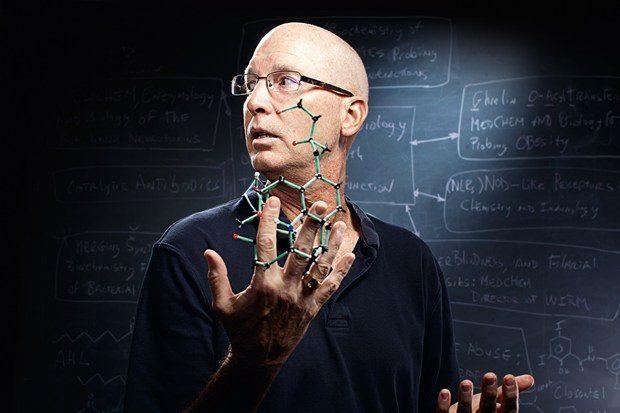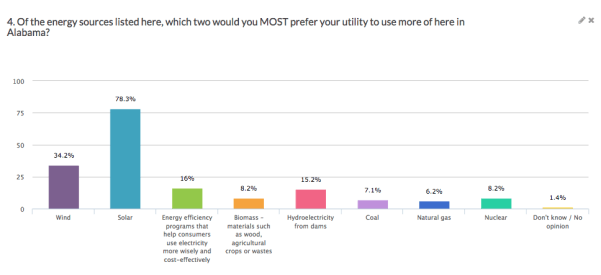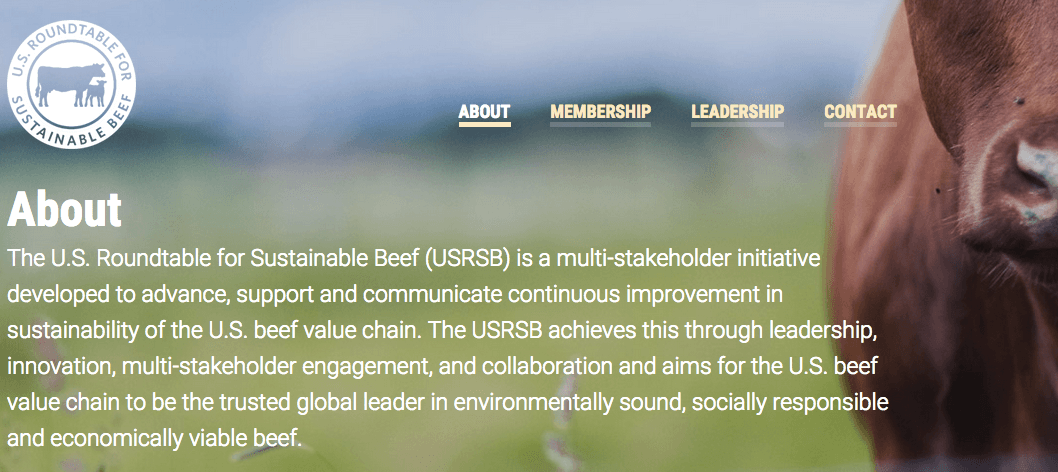Social Responsibility: Does Exxon Mobil Practice for the Long-Term?


By Robert Conrad
Gone are the days in which corporations could operate with the sole responsibility of turning a profit. With the rise of the Internet and social media, we have become more aware of a company's actions and whether or not it is truly invested in our long-term existence. However, when a large corporation's actions are negatively impacting the environment, yet it possesses the funds necessary to research and possibly enact greener alternatives, the corporation become morally repugnant. ExxonMobil is a recent example of what happens when a company puts profits ahead of social responsibility, going so far as to even put a lid on its actions.
In 2007, amidst pressure from shareholders, ExxonMobil announced that it would no longer fund climate change denial efforts. However, since 2008, the Guardian states that the oil and gas giant had given more than $2.3 million dollars to Republican members of Congress who deny climate change, as well as the American Legislative Exchange Council, an ultra-conservative group that states that carbon dioxide is the "elixir of life." Environmental groups and campaigners have confronted ExxonMobil regarding these relationships, stating that they create a "climate denial industry" that downplays the seriousness of global warming. ExxonMobil's lack of initiative regarding global warming even led to a shareholder revolt in 2008, led by none other than the Rockefeller family, whose ancestor John D. Rockefeller founded the original oil company at the core of ExxonMobil.
Since 2008, ExxonMobil has cut funding to multiple groups that downplay current global warming trends or attack policies that will help solve the problem. However, it has come to light that Exxon knew about the dangers of global warming and how their efforts exacerbated the problem as far back as 1981, yet continued funding anti-climate change groups. As for now, this deniability has become the biggest barrier between the United States and effectively addressing global warming.
The continued investment in tar sands and oil shale by energy companies like ExxonMobil, along with global reliance on liquefied natural gas and gas flaring during excavation, all cause carbon emissions. In fact, 82 percent of global warming emissions from the United States are attributed to energy use, with oil accounting for 42 percent of those emissions.
To combat this, some countries and municipalities have enacted carbon abatement regulations. In Europe, a cap-and-trade scheme is put in place that limits the amount of emissions a company can disperse, which prompts the company to innovate in order to meet or fall short of that limit. Though somewhat behind, the United States is also implementing CO2 abatement policies across the country, with California's recent research into low-carbon fuel standards. Short of legislation, energy companies themselves also have the power to enact change by abiding by these regulations, utilizing GIS systems to determine their environmental impact and being transparent with the information that they acquire from those systems. Given the power that companies like ExxonMobil have in legislature, they have the power to enact many positive changes.
Despite this, ExxonMobil's recent forays in the media display perfectly the backlash that a corporation can expect when it does not practice a clear corporate social responsibility policy. Had ExxonMobil been doing so, it would have either found a way to reduce its impact or research greener alternatives in the interest of human preservation. Instead of investing in greener alternatives, ExxonMobil opted to invest in politicians and pundits who believe that climate change is a hoax. Unfortunately, factors like global warming have the potential to negatively impact future generations whose environmental efforts may be largely undermined by big energy companies endlessly pumping more carbon dioxide into our atmosphere.
In fact, history is rife with corporations who have faced financial or managerial scandals, including Enron and Worldcom, that were all pursuant of personal gain at the expense of social responsibility. ExxonMobil's inaction and continued excavation efforts since 1981 suggest that it was not only aware of the problem, but did nothing in the pursuit of short-term gains. The philosophy of economist Milton Friedman that states that a corporation's sole responsibility is to make as much profit as legally possible has fallen under scrutiny amid these scandals.
In contrast, Drs. Nickles and Schiebert of Pepperdine University have stated that in order for corporations to be successful, they need to be socially responsible beyond what the law requires. Corporations not only have a moral responsibility to their stakeholders, but to everyone who comes into contact with them as well.
One company that has enacted a successful corporate social responsibility policy is the Verdigris Group, a real estate development and consulting firm. It accomplishes this by focusing on energy-efficient construction and occupant health while reaping the financial benefits of operating more efficiently. Not only is the Verdigris Group saving money and reducing its carbon footprint, but it's also building a reputation built on trust and mutual respect.
Another company that has successfully implemented social responsibility is RBC Wealth Management-USA, headed by John Taft. RBC has spearheaded the Blue Water Project, a 10-year global commitment to protect natural watersheds. Under this initiative, $50 million is pledged to organizations whose purpose is to protect these watersheds. Other projects that can be funded by RBC include the Children's Mental Health Project, After School Project and Olympians Program. Through this, RBC is not only attending to environmental concerns, but also social concerns through various funding programs.
With all of us living on this planet together, not even corporations are immune to the negative implications that can come from unethical business practices. The focus should not be on short-term gains, but whether or not we will continue to sustain a viable planet. ExxonMobil can certainly learn something about social responsibility from companies like RBC and Verdigris Group.
Image credit: GreenThoughtBlog
Robert Conrad is a former Business student and avid admirer of the Pacific Northwest. In his spare time, he likes to play copious amounts of video games and go on ridiculously long walks. Follow him on Twitter.
The Addiction Vaccine That Could Save ‘Quadrillions’ on Health Care Costs


By Daniel Faris
You’d think it would be a big deal if a scientist created a vaccine that could do away with addiction. So, what if I told you that we already had one?
Kim Janda has a vaccine for heroin addiction. And for meth. And for cocaine, too. Janda, an American chemist and the Ely R. Callaway, Jr. Chaired Professor at the Scripps Research Institute in La Jolla, California, gets calls and emails all the time from addicts, and people who know addicts, who want more information about getting involved with clinical trials.
The problem? There haven’t been any clinical trials. And there won’t be any for the foreseeable future, either.
Says Janda: “No pharmaceutical company is going to fund trials for heroin, no way … Forget about it.”
Though he’s worked on vaccines for a variety of addictions, he says the one for heroin shows the most promise. In 2013, he carried out pre-clinical trials on rats who had, ahem, developed an addiction to heroin. After they were given the vaccine, the rats exhibited a dramatic reversal: After receiving the vaccine, these “addiction immune” rats could be injected with 10 times the dose of heroin that a “normal” rat could handle — without any ill effects whatsoever.
So, what does this mean for human beings? Nothing yet, and that’s a big problem.
How big is our heroin problem?
In America, our failed drug policies have actually contributed to a dramatic rise in heroin addiction and overdose. Painkiller abuse is frequently cited as a potential “gateway” to heroin use, which makes the 259 million painkiller prescriptions filed each year even more dubious. In 2014, the Centers for Disease Control and Prevention estimated that 46 Americans die from painkiller overdoses every day.
So, why would a painkiller abuser “graduate” to heroin? It’s pretty simple: Heroin is cheaper. And you don’t need a prescription to get it.
Existing solutions
Janda’s vaccines are not the first attempt to curb addiction with pharmaceuticals, but they’re almost certainly the most promising. The FDA has already approved a variety of drugs to treat withdrawal symptoms — a baby step, to be sure — but the drugs themselves pose a danger of dependency and withdrawal. You might recognize some of the names, including naltrexone, acamprosate and buprenorphine.
The short version is that they’re far from perfect.
Adding to Janda’s setbacks were lackluster results from a nicotine vaccine study in 2011 and a cocaine vaccine study in 2014 — two failures that, unfortunately, seem to have convinced pharmaceutical companies that research of this kind is a dead-end.
The tricky part of a vaccine like this is the fact that drugs wreak havoc with the brain’s reward systems — neurological impulses that the human body relies on for survival. Any attempt at a vaccine must seek to curb this effect without interfering with these important natural processes. Existing pharmaceutical solutions address addiction by blocking the relevant receptors in the brain. Janda’s vaccine works instead by preventing the drug from reaching the brain in the first place.
Money as the Great Equalizer
The next step for Janda and his team of researchers is to secure investigational new-drug status from the FDA, which would allow them to conduct human trials. They’ve already received funding from the National Institute of Drug Abuse to the tune of $27.1 million — but that’s not enough to cover the cost of human trials.
And that brings us to a pretty embarrassing point: We live in the richest and most powerful country on earth. Janda and his team have stumbled onto something here that could change life in America in untold ways, and still they struggle with pedestrian concerns like money. Think about it: Without addiction, we’d make fewer arrests, our jails would be emptier, our cops would be less distracted with hunting and imprisoning drug addicts, our courts would be greatly unburdened, and we could turn our attention toward treatment instead of the jail-first-and-ask-questions-later approach we have now. In short: We could stop treating addicts like criminals and treat them instead like human beings with a disease.
Can we even put a price tag on that? According to the Affordable Care Act, the answer is no. As far back as December 2014, it was being reported that provisions in the still-new law would require non-grandfathered health plans to provide services recommended by the U.S. Preventive Services Task Force. Although the ACA is still clearly in its infancy, it seems to have laid the groundwork for more widespread coverage of preventive medicine — including, perhaps, vaccines like Janda’s.
But I can hear you already: Addiction is a choice—not a disease! Sure; it may start as a choice, as many things do, but neither you, nor I, nor anybody else, has a comprehensive understanding of what happens in the brain between that first “taste” of heroin and full-blown addiction. And that makes the management of America’s various addictions a job for scientists — not for cops.
The good news is that, in the world of pharmaceutical and health technology, sometimes all it takes is for one company, or even one person, to say or do something that captures the attention of the world. In the fight against aggressive robo-calls, for example, all it takes is one frustrated plaintiff. And in the worldwide effort to rid the world of addiction, that one pivotal person may well turn out to be Kim Janda.
At the end of the day, acknowledging a degree of fluidity in the way we respond to national health crises could help us save an incredible amount of money. George Koob, who has been at Janda’s side throughout these vaccine trials, probably said it best:
“I am not sure Americans realize that, if they treated alcoholism and drug addiction, they would save quadrillions of dollars in health care costs.”
So, if we can’t answer to our hearts, maybe we can at least answer to our wallets.
Image credit: Kim Janda
Daniel Faris studied journalism at the Writers Institute at Susquehanna University. You can join him at Only Slightly Biased for conversations about politics, The Byte Beat for insight into emerging technology, and New Music Friday for thoughts on progressive music.
Alabamians Overwhelmingly Ask for Freedom to Choose Solar Energy


By Kyle G. Crider
Alabamians are overwhelmingly in favor of their utilities boosting the use of solar energy to generate electricity, and they are nearly unanimous in their opposition to penalizing solar by tacking on fees, according to a new survey conducted by the Alabama Solar Knowledge Project.
More than 1,600 Alabamians responded to the informal survey by the ASK Project, a collaborative initiative of the Alabama Solar Association, the Gulf States Renewable Energy Industries Association, Alabama Environmental Council and the University of Alabama at Birmingham’s Department of Government. The results underscore the broad public support for a transition to clean energy, said Doug Elgin, president of the Alabama Solar Association.
“The energy landscape is changing quickly all across the United States. The price of solar energy is falling dramatically, and every day, more and more residents and businesses are turning to it,” Elgin said. “Everyone should have the freedom of choice to take advantage of solar energy.”
The strength of the survey response leaves little doubt that Alabamians want more solar for their homes and businesses. Out of more than of 1,600 responses to the survey, 78 percent picked solar as one of the top two sources of energy that they would like to see their utility use more of in Alabama. Wind came in second as the next most-preferred energy source, with 34 percent of the respondents selecting it as one of their top two choices.
A study conducted several years ago by researchers at Arizona State University placed Alabama eighth nationally in terms of states that would benefit the most from expanding solar energy deployment. Alabama currently ranks 48th in both installed solar capacity and the total number of solar jobs per capita, which Jeff Cantin, president of the Gulf States Renewable Energy Industries Association, said “leaves a lot of room for growth.”
“The deep South, especially Alabama, has great solar potential that has gone untapped for too long,” Cantin said.
A lack of policies to promote solar growth is a major reason that Alabama is falling behind other states. Georgia, for example, recently enacted the Solar Power Free Market Financing Act, a law that took effect on July 1 and will make it easier for consumers to add solar to homes and businesses. Two years ago, the Georgia Public Service Commission required Georgia Power to triple the 210 megawatts of solar that the company wanted to add its supply. As a result of actions like these, Georgia, which has a solar potential almost identical to Alabama’s, is now on pace to quadruple its amount of installed solar capacity this year over 2014. More than $110 million has been invested in Georgia solar since the beginning of last year, and the state now has almost 3,000 solar-related jobs, six times as many as Alabama.
“The Southeast is making huge strides in developing affordable solar energy and creating new jobs in the process,” Cantin said. “Alabama is the last to jump on the bandwagon, but there is great potential for consumer savings, business opportunities and economic development.”
Alabama is one of only four states in the nation without ‘net metering’ policies, which allow customers to generate their own electricity from solar and receive credit for energy that flows back into the grid. Net metering is considered the simplest, fairest way for states to accommodate solar in their energy mix. Alabama is also one of 13 states with no renewable energy standard, which would set long-term targets for solar energy development.
In fact, much of Alabama is penalized for developing solar. Alabama Power requires customers who add solar to their home or business to pay an extra monthly fee of $25 to $50 or more, despite the many documented benefits that solar provides to the grid. This monthly fee of $5 per kilowatt of capacity is one of the largest of its kind in the country and affects roughly two-thirds of Alabama. In contrast, the Tennessee Valley Authority, which delivers power to the northern third of Alabama, pays families and businesses to install rooftop solar and generate their own power.
In the ASK survey, 94 percent of respondents said they disapprove of the solar fee, and 80 percent said they strongly disapprove.
Respondents also said overwhelmingly that: they would like their utility to provide more information about the energy sources such as solar, wind, coal and natural gas that the company uses(86 percent want more information); and that bill-paying customers should be allowed to participate in planning decisions about energy.
“We have great solar potential in Alabama, and resources at UAB like our state-of-the-art GIS capabilities can be used to optimize how solar power is distributed,” said Associate Prof. Akhlaque Haque, director of UAB’s Master of Public Administration Program. “But we need a more supportive policy landscape to be able to capitalize on these resources.”
The ASK survey was conducted online this spring and promoted through ASK’s Facebook page. In all, 1,618 Alabamians responded from every part of the state, with the largest concentration of responses coming from Birmingham and central Alabama (31 percent), followed by Mobile and southwest Alabama (15 percent), Huntsville and northeastern Alabama (15 percent), Northwestern Alabama (12 percent), eastern Alabama (8 percent), Montgomery and the surrounding region (7 percent), Tuscaloosa and the surrounding region (6 percent) and southern Alabama (5 percent).
A full copy of the survey results is available at this link.
Kyle G. Crider is Energy Project Manager for the Alabama Environmental Council and the Alabama Solar Knowledge project. Kyle holds a bachelors in Environmental Studies and a Master of Public Administration (MPA) degree with a double-emphasis in Urban Planning & Policy Analysis. He is a Leadership in Energy and Environmental Design Accredited Professional, Neighborhood Development (LEED AP ND).
Ecotourism is Gaining Momentum in India


By Tanmay Sharma
In the morning when the sun was finally shining bright, I picked up the daily newspaper, which was nothing unusual; there were stories of politicians, scams, criminal ratios, etc. With a disappointed face, I decided not to study the details, just the overview. Amidst all these, there was one article that grabbed my attention, and that was related to ecotourism.
The following afternoon in my free hours, I did a proper research about ecotourism, and in the meantime, I contacted my cousin, who is a former alumni of Indian Institute of Ecology and Environment. The facts that she discussed were quite new to me. She even told me that there are many towns in India that are made just for ecotourism. With this article, I would like to share with you all such facts that I came across about ecotourism, particularly in India.
What is ecotourism all about?
In simple words, ecotourism means a sustainable form of tourism that allows the tourist to see the most pristine form of Mother Nature. Ecotourism encourages travelers to spend time in the lap of nature. In ecotourism, tourists are indulged more in activities that are less intrusive or destructive toward ecosystem and more sustainable and supportive towards promoting the native culture of the locals.
Why should ecotourism be promoted in India?
Ecotourism as a concept is quite interesting. It not only allows you to get one step closer to nature, but also encourages conservation initiatives. Promoting ecotourism in India will lead to:
- Preservation of wildlife and animal's natural habitat
- Platform to bring the local tribal community into the limelight and gain some revenue.
- Development of remote areas surrounding.
- Revenue that earned through eco-tourism ventures can improve the long-term economic prospects of India.
- Not only helps in Conservation initiatives but also helps in raising awareness about political and social issues in developing countries.
- Both local and visitors, become more aware of the surrounding environmental wealth.
Ecotourism gains momentum in India
India is one of the most diverse country in the world, and that spells magic. Ecotourism in India is a thriving industry owing to the fact that country has managed to save its resplendent natural beauty.
The country has a biological park, zoological parks, tea plantations, wildlife sanctuaries, mighty mountains and lush green jungles in its kitty. Being popular for its exclusive nature and tribal population, India is nature's bounty and the best place to stay in the world (in my humble opinion).
In this context, I would like to state a fact that was quoted by my sister: Thenmala in Kerala was the first ecotourism destination in India. Other than Thenmala, there are multiple ecotourism destinations in to choose from: Karnataka, Uttarakhand, Andhra Pradesh, Tamil Nadu, etc.
Best ecotourism destinations in India
From the dramatic deserts of the Rajasthan to the lush green forest of Cherrapunji, from the mighty Himalayas to the majestic deep blue beaches of the South, India throughout the decade has been a favorite ecotourism destination which hosts the rich flora and fauna. I asked my cousin about all of these ecotourism destinations, and she mentioned around 50 such places in India. So far, I myself have explored 30 ecotourist destinations.
Keeping in mind my experience, I listed few places that may serve as stop-offs for your next vacation. Let's go for a holiday through some of the best ecotourism destination in India.
Kerala: Munnar, Backwater waterways, Thenmala, Thodupuzha, Eravikulam National Park, Periyar National Park, Kodaikanal
Karnataka: Coorg, Nagarhole, Nagarhole National Park, Bandipur National Park
Goa: Galgibaga Beach
Andhra Pradesh: Tyda, Maredumilli
Odisha: Chilika
West Bengal: Sunderbans National Park,
Sikkim: Khangchendzonga Biosphere Reserve
Assam: Kaziranga National Park, Majuli
Meghalaya: Mawlynnong
Nagaland: Jotsoma village
Arunachal Pradesh: Namdhapa National Park
Ladakh: Tsomoriri Wetland Conservation Reserve
Madhya Pradesh: Kanha National Park
Ecotourism in India will take you to some of the cleanest villages in Asia, famous wildlife sanctuaries and other famous territories where you have never been before. So, go green and pick a tourism hot spot for your next holiday.
Ecotourism activities in India
India has the makings of one of the best ecotourism destinations in the world. Slowly and gradually, India is developing infrastructure without destroying natural surroundings. Mentioned below are ecotourism delights that every tourist should experience on an eco-tour to India:
- Trekking and cycling
- Nature study and bird watching
- Village homestay
- Agrotourism
Final Words...
With all these facts, my sister ended our discussion about ecotourism. She also further told me that ecotourism is flourishing at a tremendous pace in India. But right now, the initiative is very fragile and sensitive because, due to human interference, India is losing its natural bounty. The government of India has formed a 13-member community, called Ecotourism Society of India, which focuses on creating awareness about ecotourism and helps in framing guidelines.
For our part, what we in India can do is to promote ecotourism as much as possible. If you ever have an interaction with tourists, tell them how diverse our country is. India has a lot to offer, especially in terms of terms of wildlife, flora and fauna, which is why ecotourism is growing so popular.
My next article will be all about the eco-tourism destinations in India that I have experienced. Stay tuned folks; I will soon get back to you guys with my travel diaries.
Image credits: 1) SandizWorld 2) Wikimedia Commons
Tanmay Sharma is a wildlife enthusiast and a traveler, who is fond of exploring various national parks and adventurous places across the world. His passion and love for wildlife has led him to travel in every nook and corner of India. Besides being a travel lover, he is blessed with flair of writing. He combines both his passion and flair, so as to share the unmatched travelling experiences and expertise with the world.
Aldi challenged over supply chain treatment of Bangladeshi workers


The Bangladesh government and the German low-cost retailer, Aldi, are being urged to take action to ensure over 1000 workers employed at the Swan Garment and Swan Jeans factories are provided with months of unpaid wages and bonuses they were deprived of following the sudden and illegal closure of the factory in April 2015.
Swan workers have been engaged in a sit-in outside the Dhaka Press Club since 11 July to demand action from the Bangladesh government and are due to meet with the Minister of Labour to discuss their demands, according to the Clean Clothes Campaign (CCC).
Swan Garments and Swan Jeans are both owned by the Swan Group, who also own a further three factories in the Dhaka area. The Swan Group websites lists a number of European brands as long term buyers from the Group including Lidl, Next, Bestseller, Dunnes and Walmart. Workers claim they were producing for Aldi Australia, Piazza Italia and Motivi in the months prior to closure.
The problem of sudden and illegal closures of garment factories is growing in Bangladesh, in part due to changes in the industry triggered by the Rana Plaza collapse, says CCC. These closures are leaving thousands of workers unemployed and deprived of their legally owed severance pay. To date little action has been taken by the Bangladesh government or international brands and retailers to ensure workers are not left without the wages and benefits they are owed.
“Swan Garments is one of many factories that has closed illegally in Bangladesh over the last year. As in the majority of cases it is workers who are left with nothing – not even the wages and severance payments they are owed” says CCC's Samantha Maher.
“It is unacceptable that once again workers are being left to pay the price for bad factory management, impossible buyer demands and government inaction and we urge Aldi and the Ministry of Labour to ensure justice for the Swan workers."
U.S. Roundtable on Sustainable Beef: What's the Beef


By Danika Carter
The industrial beef industry has had it up to "here" with all the questions from consumers. How do confined feedlots impact water and soil health? Are cows supposed to eat corn? How much land and water is necessary to raise beef? What are the health impacts of hormone and antibiotics use?
They are taking matters into their own hands. The industry formed the U.S. Roundtable on Sustainable Beef and this group held their first General Assembly last week in Denver just before the annual Cattlemen’s Conference.
To kick things off, the board's interim chair Nicole Johnson-Hoffman, VP & U.S. managing director of Cargill value-added meats, McDonald’s business unit, noted that the USRSB is “a multi-stakeholder effort. This is not an effort that will represent only one viewpoint. It won’t result in all of us agreeing and that’s terrific.” She called for divergent views, lively discussions and a collective effort to work through obstacles and build consensus. “This will not be an effort by industry, special interest or community. This will be an effort by all of us.”
It is both admirable and necessary that the beef industry is taking on the issue of sustainability. However, given Johnson-Hoffman’s comments about bringing together beef stakeholders, there are a number of groups notably absent from the USRSB meeting. There were no representatives of organic and natural producers, advocates nor certifying agencies. Nor was the American Grassfed Association in attendance.
As an attendee, I heard many derisive comments about “foodies,” “hipsters” and organic advocates -- the deeper green and natural advocates that push for the changes the cattlemen are now making. For example, Leanne Saunders of Where Food Comes From referred to certifications like organic, Angus, and grass-fed, as only having niche appeal, and actually said that organic certification is “talking to the hairy women in the room.”
Retailers on the USRSB board of directors hail from Walmart and McDonald’s. There were no retailers of natural and organic foods even in attendance, let alone on the board. The environmental organizations involved are the World Wildlife Fund and The Nature Conservancy, both of which have been criticized for being too close to industry.
The concern about who to include extended to NGOs. Jason Hitch, CEO & Chairman of Hitch Enterprises, Inc, a beef producer with two feedlots and 110,000 head of cattle, suggested that advocacy groups such as the Humane Society and Peta be excluded from participation in the USRSB because they seek the complete and total “destruction of the beef industry.” “If you want producers to be involved," he exclaimed, "these groups can’t be involved.” Having groups like this in the room might discourage producers from speaking candidly.
To this concern, Johnson-Hoffman noted that everyone who joins USRSB must be in alignment with the vision and mission of the organization (producing sustainable beef) and be willing to work towards that goal. If not, this may not be the group for them. However, she also noted that it’s important that the USRSB hear from its biggest critics in order to grow. She made it very clear -- she wants to hear these voices. So it will be interesting to see which of the deeper green organizations can have their memberships approved by the Board of Directors.
Some of the biggest critics of industrial beef production and feedlots comes from small advocacy groups and individuals -- groups that might struggle to pay the $1000 annual membership fee to join the USRSB, even if they were to be welcomed into the group. All members of the USRSB are encouraged to join one of 3 working groups. Being a part of a working group does not require membership in the USRSB, which may make it easier for smaller organizations to be a part of the conversation and have their voice heard.
Several speakers and attendees commented that all ranchers and farmers are sustainable by the nature of what they do and by their mere existence. “Sustainability is what ranchers do every day,” says Johnson-Hoffman. They must protect the land or their operations will cease to exist. According to Billy Cook, Ph.D., senior VP and division director of the agricultural division of The Samuel Roberts Nobel Foundation, “Producers have long talked about land stewardship, but they didn’t realize that what they were doing was practicing sustainability.”
It's clear that the USRSB’s job is not to tell the industry what to do. It is to help industry define sustainability as it’s related to the beef value chain for itself, tell producer and industry stories, educate producers, and share best practices.
It’s no longer workable for producers to keep the details of their operations private and expect consumers to trust that they are running a sustainable operation. Consumers want documentation, verification and proof.
This is an exciting time for consumers and advocates who want their food produced in a sustainable fashion. This is the time for everyone interested in sustainable beef to join the conversation and have their voice and perspective heard and included. It will be interesting to watch this project and see how the USRSB defines sustainability and which voices are included, and which are excluded.
Danika Carter is a freelance writer, social media manager and host of #EcoWed (Eco-Wednesday) Twitter parties. She writes frequently on issues of green living, eco-beauty, holistic health. She is an avid investigator of household and cosmetic chemicals. You can follow her at @YourOrganicLife.
Image credit: U.S. Roundtable for Sustainable Beef
Masdar’s Solar Hub Provides Unique Test Facility in the Middle East


Other than the fact that the earth underneath the Middle East is drenched in oil, you wouldn’t think there was any reason why it wouldn’t be a prime area for solar power deployment. After all, vast stretches of undeveloped desert land are continuously baked by a relentless equatorial sun.
But it turns out that there are at least two reasons why, despite these obvious advantages, this region is less than ideal for solar power -- explaining, at least in part, why its development of solar power has been slow. First, there is the sandy dust -- coming in, driven by winds that constantly blow, lightly coating solar panels and reducing their efficiency on good days, and outright damaging them when those winds turn fierce.
The other problem is the heat. Most solar cells lose efficiency as temperatures rise, and there are few places on the planet where they rise higher than in the Middle East.
These concerns and others like them are what motivated the folks at Masdar, Abu Dhabi’s renewable energy company, to establish the Masdar Solar Hub: a state-of-the art solar testing and R&D hub for photovoltaic and solar thermal technology. Masdar is a wholly-owned subsidiary of the Mubadala Development Co., which is owned by the Abu Dhabi government. Established in 2006, Masdar is on a mission to advance the clean energy industry in Abu Dhabi, the United Arab Emirates and around the world, as well as being a catalyst for the economic diversification of the emirate. The Masdar Solar Hub, which was launched in January, performs testing on solar energy and thermal storage equipment, evaluates prototypes evaluation, and monitors solar irradiance levels.
While these capabilities are applicable to solar technologies of all types, the fact that they are being tested in the harsh and demanding desert conditions of Abu Dhabi will help to identify those elements and enhancements that could improve performance and increase durability under these circumstances.
Some of these elements include surface coatings to protect the panels and keep dust from adhering to them. They will also include configurations designed to better manage the high heat levels -- either by better utilizing it, in the case of solar thermal systems, or in the case of PV systems, dissipating it away -- or utilizing materials that can perform well at high temperature.
The Masdar Solar Hub contains three primary functional areas. These are: the Photovoltaic Test Center, the Concentrating Photovoltaic Test Center and the Masdar Institute Solar Platform.
As the name implies, the Photovoltaic Test Center evaluates performance and durability of all types of PV-related equipment and systems,
The CPV Test Facility is a joint initiative of Masdar and the Spanish organization Instituto de Sistemas Fotovoltaicos de Concentración (ISFOC). It provides testing and evaluation of CPV systems under Abu Dhabi’s environmental conditions.
Masdar Insititute’s Solar Platform provides a facility where researchers, universities and industrial partners carry out R&D activities to drive research, development and demonstration of solar thermal technologies such as concentrated solar power (CSP) and thermal energy storage (TES). Resources available at the facility include a Beam Down Concentrating Tower, a solar field, a hot-oil loop, a TES system, a solar irradiometer platform, compact linear Fresnel reflector, and a double effect absorption chiller for solar cooling research.
By providing these objective test facilities, the Masdar Solar Hub will help advance the development and implementation of solar energy, particularly in the Middle East, while raising public awareness and helping Abu Dhabi to meet its goal of generating 7 percent of its electric power using renewable sources by 2020.
Says Masdar CEO, Dr. Ahmad Belhoul: “Renewables comprise one of the UAE’s key national innovation strategy sectors, and it is our mandate to support Abu Dhabi’s growth as a global innovation focal point. Masdar’s Solar Hub, our company’s newest initiative, will prove invaluable to the solar industry’s entire value chain while enhancing Masdar City’s reputation as a leading clean technology cluster and innovation ecosystem.”
Image courtesy of Masdar
Disclosure: Author was the guest of Masdar as the winner of the Abu Dhabi Sustainability Week Blogging Competition in January 2015.
Boehner's Drought Plan: Blame Environmentalists and Obama


House Speaker John Boehner – leader of the least productive Congress in American history, one which has done little, if anything, to assist the Western United States and its historic drought -- has decided to blame President Barack Obama and environmentalists for causing the drought.
According to Boehner, environmentalists are to blame because it is us who put into place environmental rules and regulations -- including mandating proper water flows to waterways that hold, among other things, endangered species. Apparently, that is the chief cause of the state's drought.
Except not at all. True, some water is being diverted to preserve ecosystems, but healthy ecosystems are necessary for a whole range of secondary economic benefits. For example, if there is not enough water in certain Northern California streams, then there won't be any Salmon catch, which would devastate fishing communities and further impact the state's agricultural economy.
But that's beside the point, because Boehner is wrong. Those flows are not the reason for the drought; instead, it is high demand from farmlands in Central California (which produce food that, it must be reminded, feed the entire country) and existing demand from large cities, coupled with a long-term dry spell that may have been acerbated by climate change.
That last part is the scary thing. Evidence is beginning to pile up that climate change, if unchecked, will only make things worse. California will get drier and drier, and soil moisture will decrease.
It's not only California that will suffer. In fact, according to data from NASA, drier conditions will prevail across the entire United States, including Boehner's home state of Ohio.
Boehner never speaks about this, however. His political party still denies the existence of climate change and refuses to listen to scientists. They are standing between President Obama's goals of strong climate action, action that would, in the long term, be better for California.
Nope. For him, the solution is to blame Obama and environmentalists and ignore reality. Just the kind of thinking that got us into this mess.
This is, of course, nothing new from the Republican leadership in Washington D.C. Besides continuing to deny climate change despite its near-universal acceptance, they refuse to empower the Environmental Protection Agency to preserve and protect water resources, while supporting water-sucking industries including dangerous hydraulic fracturing. Not to mention the millions in campaign donations from climate change denying companies, including the Koch Brothers, that Boehner and his Republican allies accept year after year.
It is easy for Boehner to blame others for this problems. But, thankfully, countless California citizens and businesses are taking real action to reduce their water use and build a more sustainable future, through the use of clean energy and water-saving technologies.
It would be great if Speaker Boehner and his party decide to come onto our side and work with us to develop real solutions to the drought. But I wouldn't count on it any time soon.
Image Source: Pixabay
How Energy Regulations Actually Help Improve Organizations


By Yaniv Vardi
Regulations, whether mandated by governments or by industries, are often scoffed at and belittled as an annoyance that hinders progress and innovation and harms business.
For example, when the pharmaceutical industry passed the 21 CFR Part 11 regulation, requiring pharmaceutical firms to submit their records to regulatory bodies electronically, many felt that the regulations would hinder productivity. Instead, the landmark regulation sparked a technological innovation that increased the production levels of manufacturers and also ensured safer finished products for end users.
The pharmaceutical industry benefited and their patients benefited as the result of the regulation.
When it comes to sustainable business practices, recent mandates and current regulations may also be viewed as stifling productivity, but they are actually here to disrupt our ways of thinking, acting and conducting business – for the better.
In the United Kingdom, for example, quoted companies are required to report greenhouse gas emissions as a part of their annual Directors’ Report. To these companies, Mandatory Carbon Reporting may at first seem like unnecessary paperwork that is expensive to manage and time-consuming to handle. But in fact, carbon reporting facilitates organizational changes that have positive effects on businesses in the U.K. and around the world.
Mandated reporting requires companies to ensure that they have visibility into their energy usage and carbon emissions in order to report their annual greenhouse gas (GHG) emissions in their directors’ reports. That visibility, in turn, results in a reduction of energy consumption and improvements to business efficiencies.
To the dieter, keeping a food diary encourages eating less; to the spender, an accounting registry promotes shopping less; to the energy-hogging business, emissions reporting mandates facilitate consuming less.
Good for the environment? Definitely, but also good for business!
When we consume less energy, we spend less on energy. By reporting and reducing our emissions, we may also qualify for rebates. Financially, it makes business sense. And when finances are involved, we tend to promote company-wide commitment and participation in the cause. This creates a corporate culture of social responsibility and energy efficiency. It promotes behavioral change within our organizations that betters our employees, our companies and our planet.
Then, when our companies report on their energy and operational efficiencies, we create brand loyalty and goodwill among shareholders and customers.
For example, the 2012 Energy Efficiency Directive established a set of binding measures to help the EU reach its 20 percent energy efficiency target by 2020, requiring EU countries to use energy more efficiently at all stages of the energy chain from its production to its final consumption. According to EurActiv: “The directive is a game-changer for energy companies, which are now required to achieve 1.5 percent energy savings every year among their final clients. The EU law is also expected to trigger the largest revamp of Europe's existing building stock to date and set new standards for public procurement and energy audits.”
Again, good for business and good for end customers. Do regulations require a paradigm shift? Perhaps. But that shift has built-in proven results and profits.
Companies around the world are voluntarily participating in ISO 50001, the international standard for establishing, implementing, maintaining and improving an energy management system.
At 3M, for example, ISO 50001 implementation resulted in 30 percent lower energy intensity, increased awareness of energy performance, engagement of top management, and improved O&M practices.
London South Bank University, implementing the same standard, set a voluntary target of a 35 percent reduction in energy use by 2020.
In 2008, when the U.K.’s Camil Farr manufacturing plant certified as ISO 50001, it reduced energy costs from £500,000 to £300,000. The difference equates to over US$300,000.
These companies clearly have a distinct vision of the future. They understand that regulations in the realm of sustainability are good for business. The new standards have tangible benefits: They help us consume less energy, save more money, quantify our corporate social responsibility efforts, engage all levels of stakeholders, and create profitable companies with loyal customer bases.
Image credit: Stock image
Yaniv Vardi is Chief Executive Officer at Panoramic Power, the leading provider of device level energy management solutions. Yaniv is a seasoned executive with close to two decades of leadership experience in the Enterprise Software Solution Industry. As CEO of Panoramic Power, he oversees the day-to-day operations of the company as well as provides vision, strategic direction and focused execution for the company.
San Diego: A Model of Water Conservation


California is in the midst of its worst drought on record. Four years into the drought, and big swaths of the state are in exceptional drought, the worst category. Snow water content in the Sierra Nevada snowpack was only 5 percent of its historical average on April 1. That’s the lowest since record-keeping of the snowpack started in 1950. It's getting scary in the Golden State.
As a result of the drought, all regions in California are implementing water conservation measures. San Diego stands out as a model when it comes to water conservation: In June of this year, the San Diego region reduced urban potable water use by about 26 percent compared to June 2013. That is after a 30 percent decrease in May compared to May 2013.
June is the first month the State Water Resources Control Board required compliance with conservation targets set for each local water agency. Earlier this year, the state mandated targets for local water agencies between 12 to 36 percent below 2013 levels. They are in effect through February 2016. In February, Gov. Jerry Brown issued an executive order for a 25 percent statewide reduction in urban water use.
The San Diego County Water Authority’s board of directors in May issued an ordinance restricting irrigation of ornamental landscapes to two days a week across the region, and increased regional conservation and outreach efforts by $1 million. The increased funding for regional conservation and outreach efforts will be spent on projects such as increasing advertising for the regional campaign When in Drought, or enhancing a smartphone app that allows users to report water waste.
The board also established local urban and agricultural supply reductions due to decreased water deliveries from the Metropolitan Water District (MWD) of Southern California, plus set penalties for local agencies that go beyond their allocated use. The MWD approved a 15 percent decrease in water supply to the Water Authority starting July 1.
San Diego has made investments in projects to insure the region has reliable water supplies. One of those projects is the Carlsbad Desalination Project, the largest seawater desalination project in the Western Hemisphere. A $1 billion project, it is expected to produce 50 million gallons of water a day beginning this fall.
The Water Authority has implemented a number of other measures beyond promoting water conservation or building a desalination plant. Some of the measures include:
- The use of hydraulic systems to pump water between reservoirs at certain times to support the power grid and insure water is available to the region if there is ever an interruption in supplies.
- The use of over 28,800 acre feet of recycled water within the Water Authority’s area of service.
Per capita water use in the San Diego region has decreased by 31 percent since 1990 and by 24 percent since 2007, due to the Water Authority’s heavy promotion of water conservation. Regional potable water use in the region was 12 percent lower than in 1990 even though the population in the county increased by 700,000.
During that period, over 300,000 jobs were added to the area, and the county’s annual gross domestic product increased by 80 percent, proving water conservation is not bad for the economy.
Image credit: Flickr/peasap